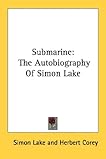In his last years, he was an object of crass curiosity. Deprived of wealthy patrons, he worked as a brewer in a London alehouse downstream of the the London Bridge. For the price of a pint, patrons could gawk at the man who made so many marvelous inventions in the court of James I. Viewed as something of a freak or "Monstar," he was a technological chimera: part showman, part scientist, and part engineer.
A man of broad vision, Dutch-born Cornelius Drebbel , also known as Cornelius Van Drebbel, did not sink into defeat. Rather as he labored in the alehouse, he began to actively plan an ambitious civil engineering project to drain the great marshes, known as the Fens, which surrounded Cambridge. He died in 1633 before this plans could be employed.
Drebbel's contributions to science were enormous, especially in the areas of mechanical engineering, chemistry, and optics. Born in about 1572 in Alkmaar, Holland, by 1590 Drebbel studied at the Alkmaar Latin school under great Dutch scholars and artisans, acquiring the skills he needed later in life.
Late seventeenth century scientist Robert Boyle credited him as one of the fathers of modern chemistry. His work in chemistry included generating oxygen, of which little was known at the time. He worked with explosive compounds such as fulminates of mercury, gold, and silver. His chemical work even helped provide for his heirs by developing a brilliant red dye which was fashionable for many years.
Drebbel either independently developed the microscope or improved upon existing models. He is known to have developed barometers, a working thermometer, and even a thermostat for a chicken incubator. He also demonstrated a heating and air condition system. A skilled artisan, he was an accomplished engraver and glass blower. He even learned to brew beer in his early years in Holland.
In the early 17th century, scientists were regared as part wizards and part artisans. They were not supported by governments or universities. Instead they had to earn their bread and perhaps perform their researches as a hobby rather than a occupation. The very lucky would land royal patrons who generally had practical demands like turning lead into gold or blowing up their enemies.
Cornelius Drebble hit upon the idea of using scientific demonstrations as door openers for funding his work. He developed special fireworks for the elaborate masques favored by royalty. In addition, he developed a "perpetual motion" device for King James I of England that may have operated as an open air barometer. Descriptions of this device are not complete and there is serious interest in building a working model.
But he is best known as the developer of the first practical submarines that were so reliable that King James I in 1620 took a turn aboard a Drebbel submarine as it cruised down the Thames river. The submarine could be navigated underwater by compass an apparently used a mercury depth indicator. Demonstrated before hundreds if not thousands of Londoners, the submarine with a crew of sixteen remained submerged for three hours and cruised at depths of 12 to 15 feet.
Powered by six oars and twelve oarsmen, the crew's air supply should have been rapidly diminished. For instance, crew of the ill-fated 19th century Confederate submarine the CSS H. L. Hunley could only stay completely submerged for between 20 to 25 minutes. Over two hundred years earlier, Drebbel solved that problem with an oxygen generator that burned a nitrate, possibly saltpeter, in order to produce oxygen.
Whether just hype or fact, there were reports that Drebbel developed a larger sea-going submarine with a crew of 24 that could stay submerged for 24 hours at depths up to 300 feet. The compartmentalized sub also featured a moon pool that would have enabled divers to enter and leave the vessel underwater.
Drebbel boasted that he could develop a series of nautical weaponry, which included submarines with rams or even spar torpedoes. It is known he developed underwater petards that could be fired by cannon that would explode on contact below the target vessel's waterline. No doubt the warheads depended upon a fulminating compound in order to detonate. Drebbel received a contract to develop these weapons for the Royal Navy along with mines and fire ships. They were supposed to be employed during the British relief attempt of La Rochelle, where French Huguenots were holding out against Royal French forces.
At this time military men despised weapons which did not fit the conventions of war. They believed their employment to be unethical and cowardly. They called them infernal machines and treated their operators as pirates rather than military prisoners.
Add the reluctance of the Royal Navy to employ them, coupled with the two previous failures by the British to relieve La Rochelle, and you have a recipe for scapegoating. The third failed attempt was blamed in part upon Drebbel's weapons systems, which did not perform as expected, and understandable English reluctance to fight in the light of heavy casualties in the previous attempts. With the death of the Duke of Buckingham, Drebbel's powerful patron, work for the Royal Navy ceased and the Drebbel family's financial plight worsened.
The development of the submarine stopped as Drebbel took up brewing in order to survive. None of his submersibles survived to be adequately documented, but engineers in 2002 developed a working model for the British TV show, Building the Impossible.
Though Drebbel did publish scientific works and pamphlets, very few of his working notes survived. His family undoubtedly possessed some of these papers, however a greater part seems to be missing. There has even been a theory put forth that like Leonardo da Vinci, Drebbel had coded notebooks. One of these notebooks on microscopy and alchemy may be the Voynich manuscript.
What if armed with these coded notebooks someone claiming to be a member of the Drebbel family did continue the work of his illustrious ancestor? You will have to read Black Flag, Black Ship to find out what happened!
Tuesday, March 9, 2010
Subscribe to:
Post Comments (Atom)














No comments:
Post a Comment